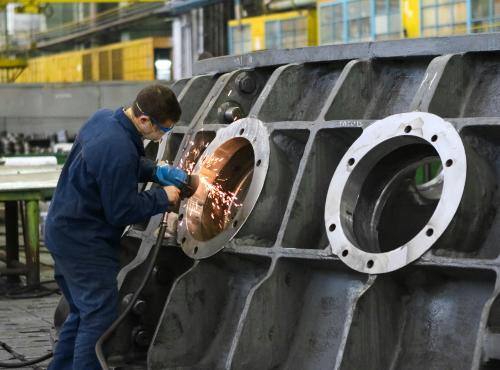Second Local Industrial Strategy Draft Released
The West Midlands Combined Authority (CA) board have approved their Working Draft Local Industrial Strategy (LIS) for Discussions with Government, hot on the trail of the Oxfordshire LEP.
The document has a strong focus on Manufacturing, drawing heavily on the region's industrial base - the highest industrial composition of any area in the UK - to drive the investment, output and productivity growth whilst providing inclusive opportunities for residents of the West Midlands.
Interestingly, the CA elected not to set new targets, rather continuing to work from the targets set in the 2016 Strategic Economic Plan (SEP) and looking to build on this foundation to drive productivity in the region.
The plan sets our four major market opportunities ‘Smart mobility’, ‘Health and life sciences’, ‘Modern services and business, professional and financial services’ and ‘Creative content, techniques and technologies’ from which it then highlights 12 sector strengths in which the CA can best achieve impact, from automotive to tourism, but with almost two thirds having clear focus on manufacturing and related industries.
The LIS also considers how current strengths can be built on to best support the sector strengths, considering youth, skills, trade and investment, innovation, supply chains and the region’s geography at the centre of the UK. The strategy then takes a deep dive into the regional skills gap, picking out insufficient skills levels, fewer residents in employment and an economy lacking dynamism as areas in which productivity could directly be addressed.
Resilience is also addressed by the strategy, with the threat of Brexit to the local economy, particularly just in time supply chains and the importance of frictionless trade stressed. Interestingly, the UK Shared Prosperity Fund (UKSPF) is also raised, and the strategy clearly sets out that that parity between current EU and domestic funding will be required in order to fund the priorities as set out in the strategy. The strategy also calls for the funding to be designed to allow local investment to properly achieve the goals of the IS.
Following this section, the strategy sets out key sectors within the region and maps their interconnectivity. A strong emphasis is then placed on the role that innovation can play in delivering the growth and productivity, considering the innovative ecosystem already existing in the West Midlands, and how that can be strengthened.
Business environment is considered, with the variances in business dynamism mapped across the region, and supply chains and SME growth and productivity both noted as key to increases to productivity. The strategy also looks at how infrastructure can be improved to support productivity growth before setting out clear commitments and a plan for implementation.
The APMG have had discussions with the West Midlands CA team, and welcome the central role manufacturing is playing in the strategy. It is also good to see the confidence in the original SEP, which means that the LIS can focus on considering the delivery of those targets. We hope other CAs and LEPs see the value in this approach and draw on it in the creation of their own strategies.




